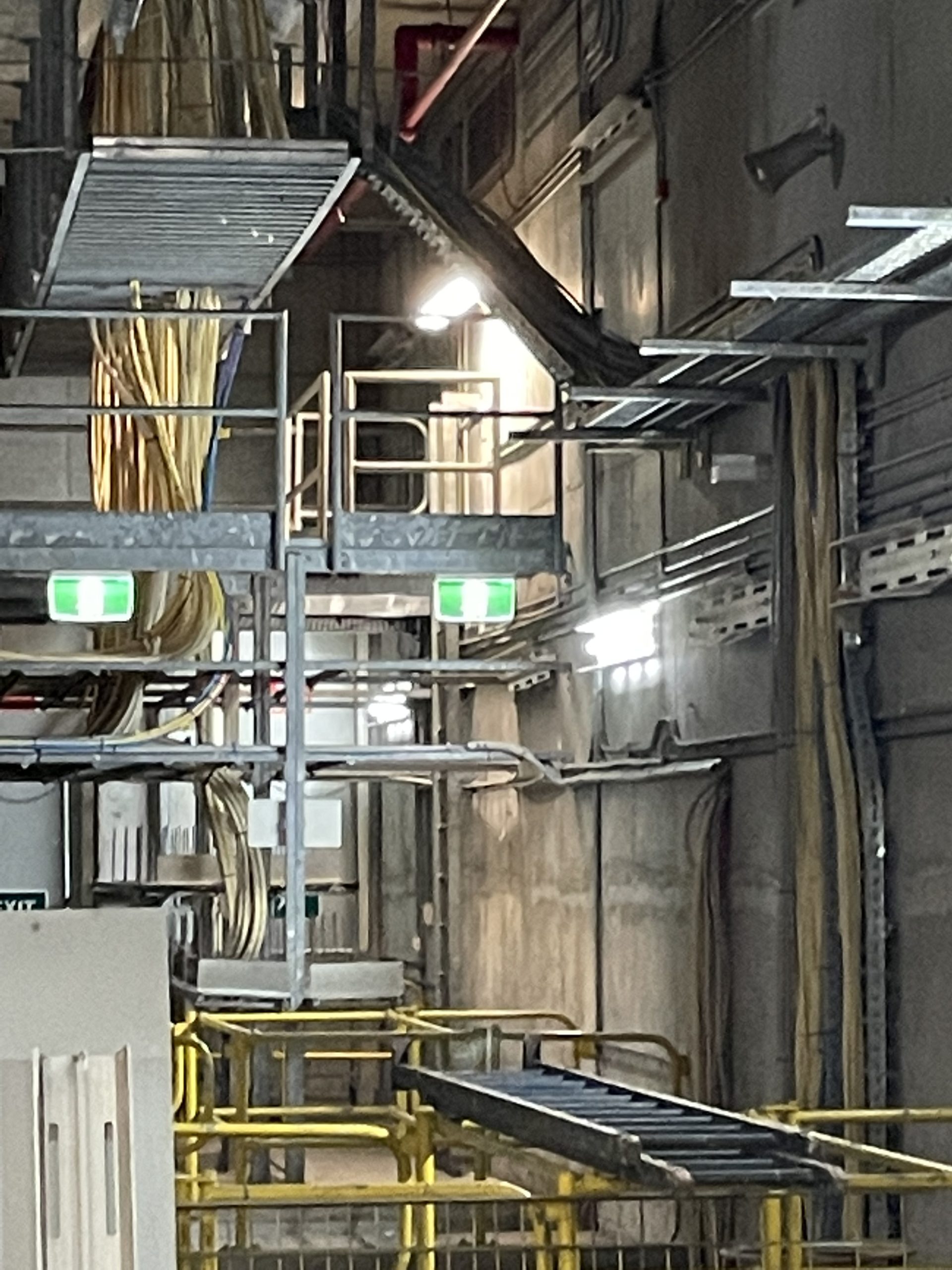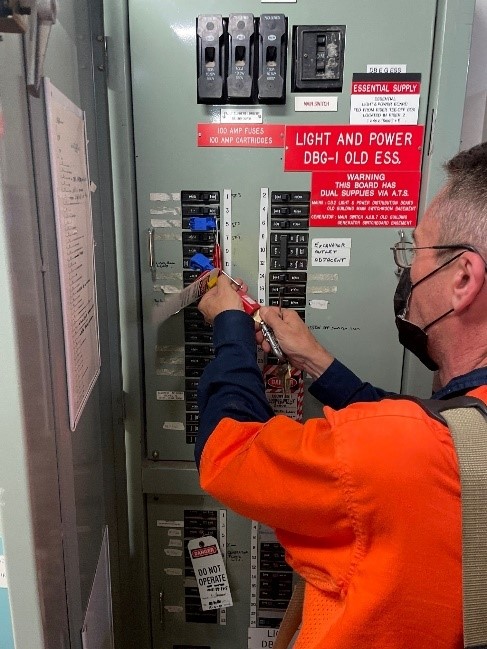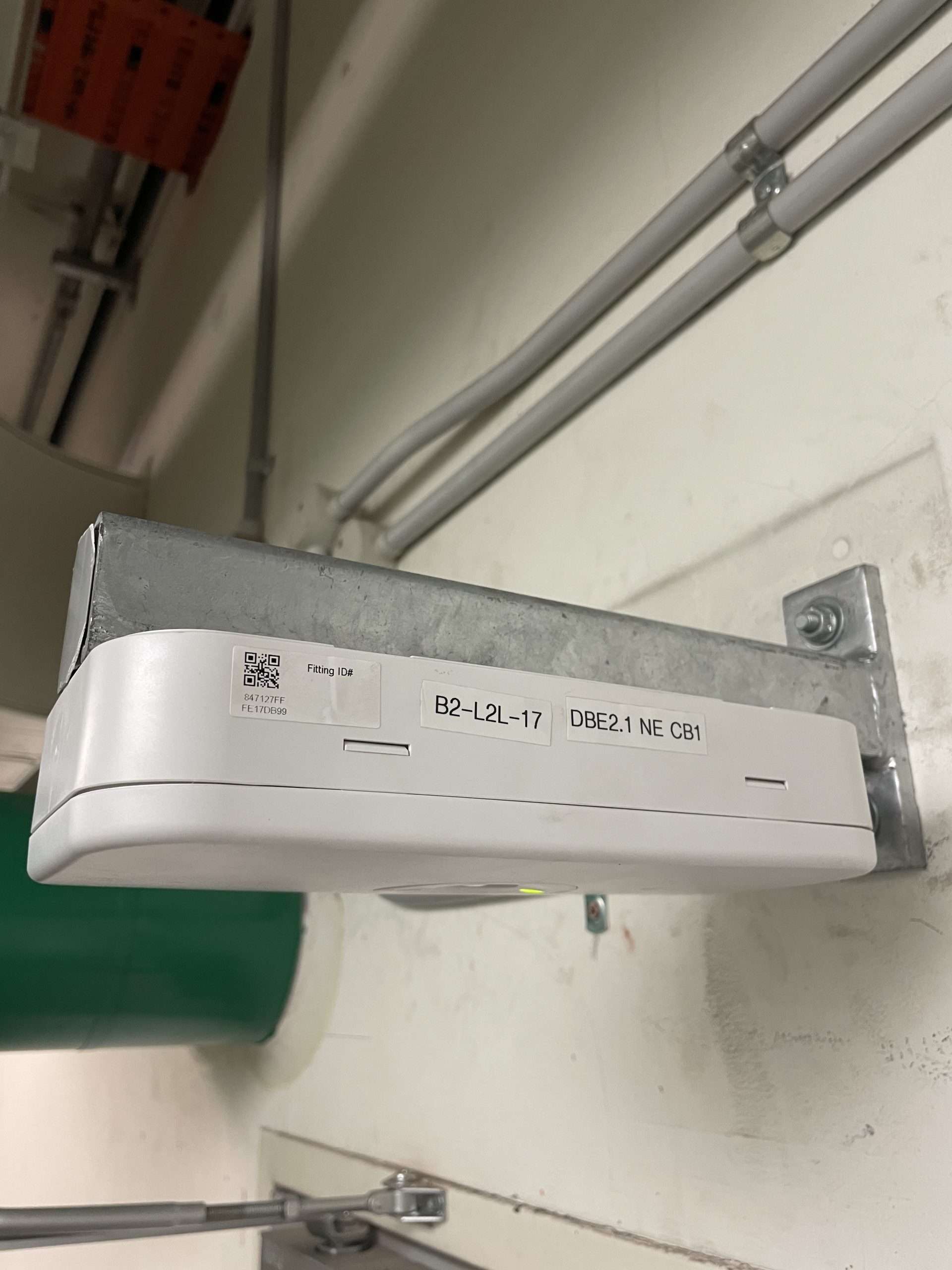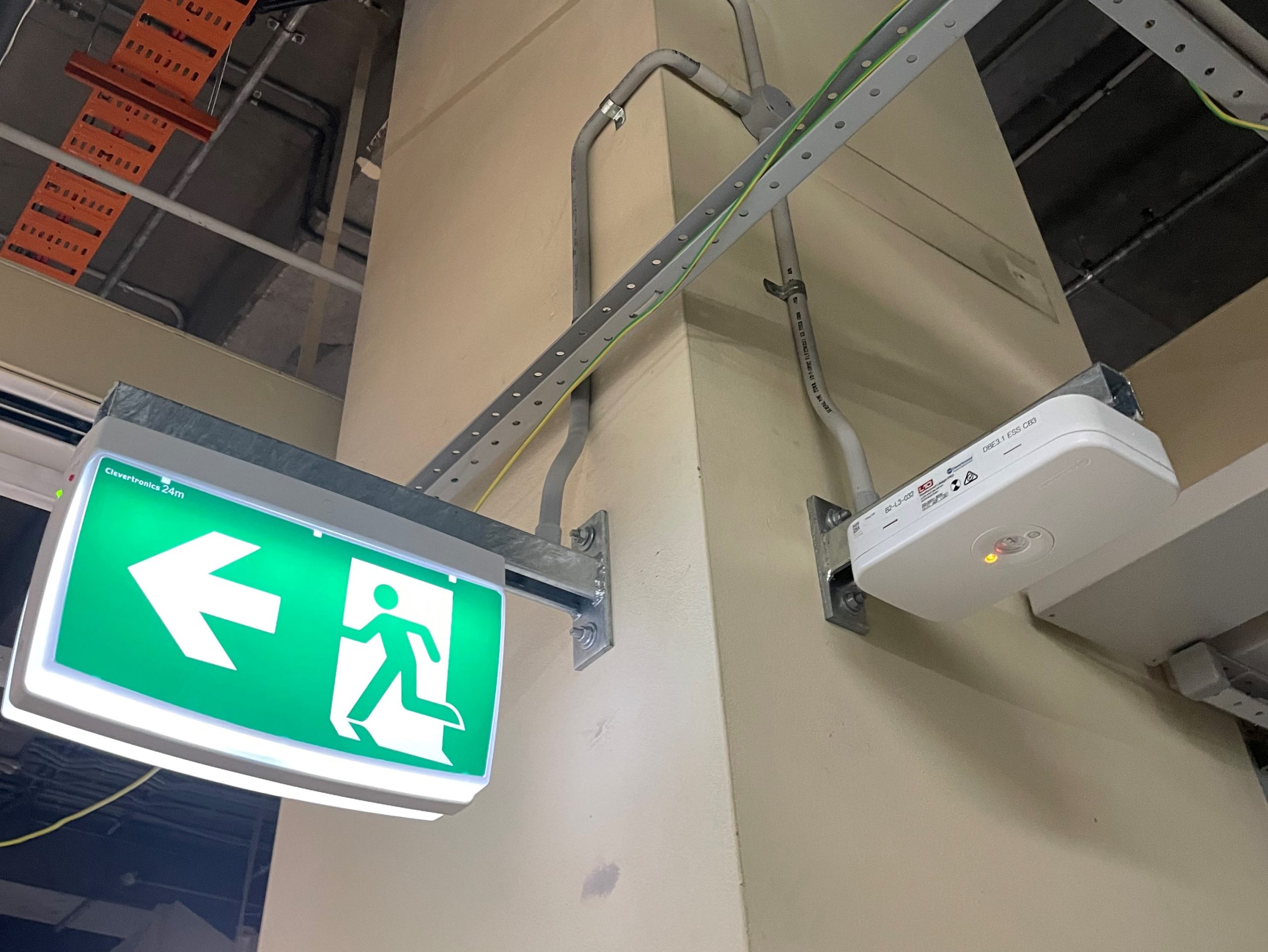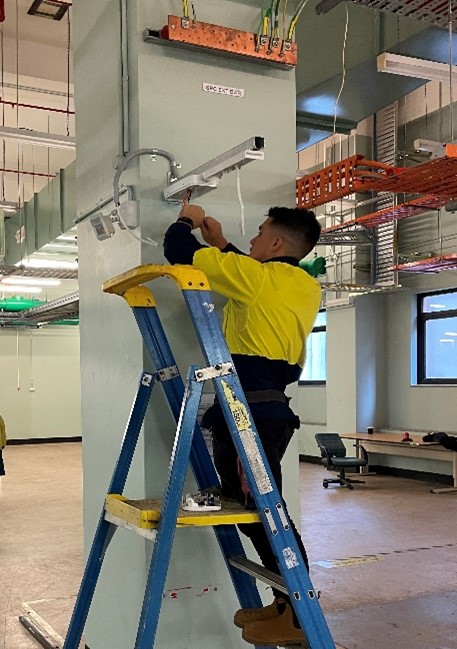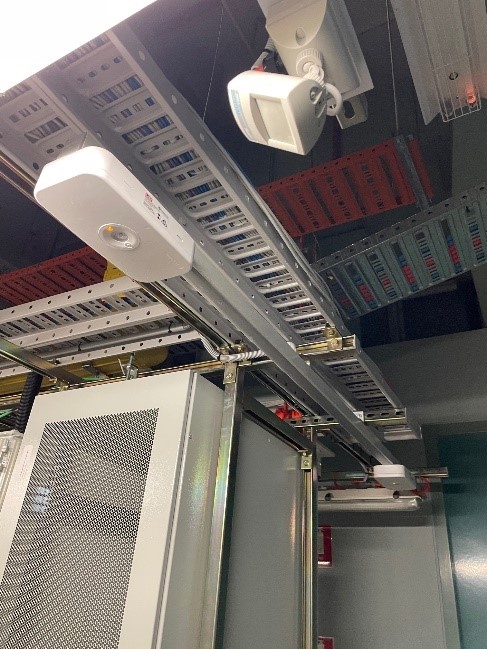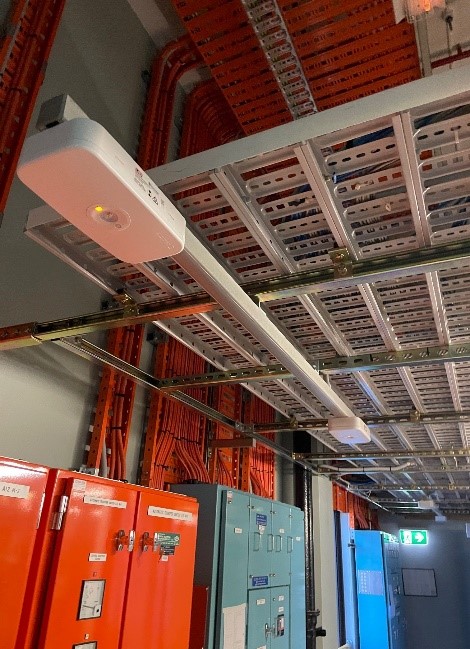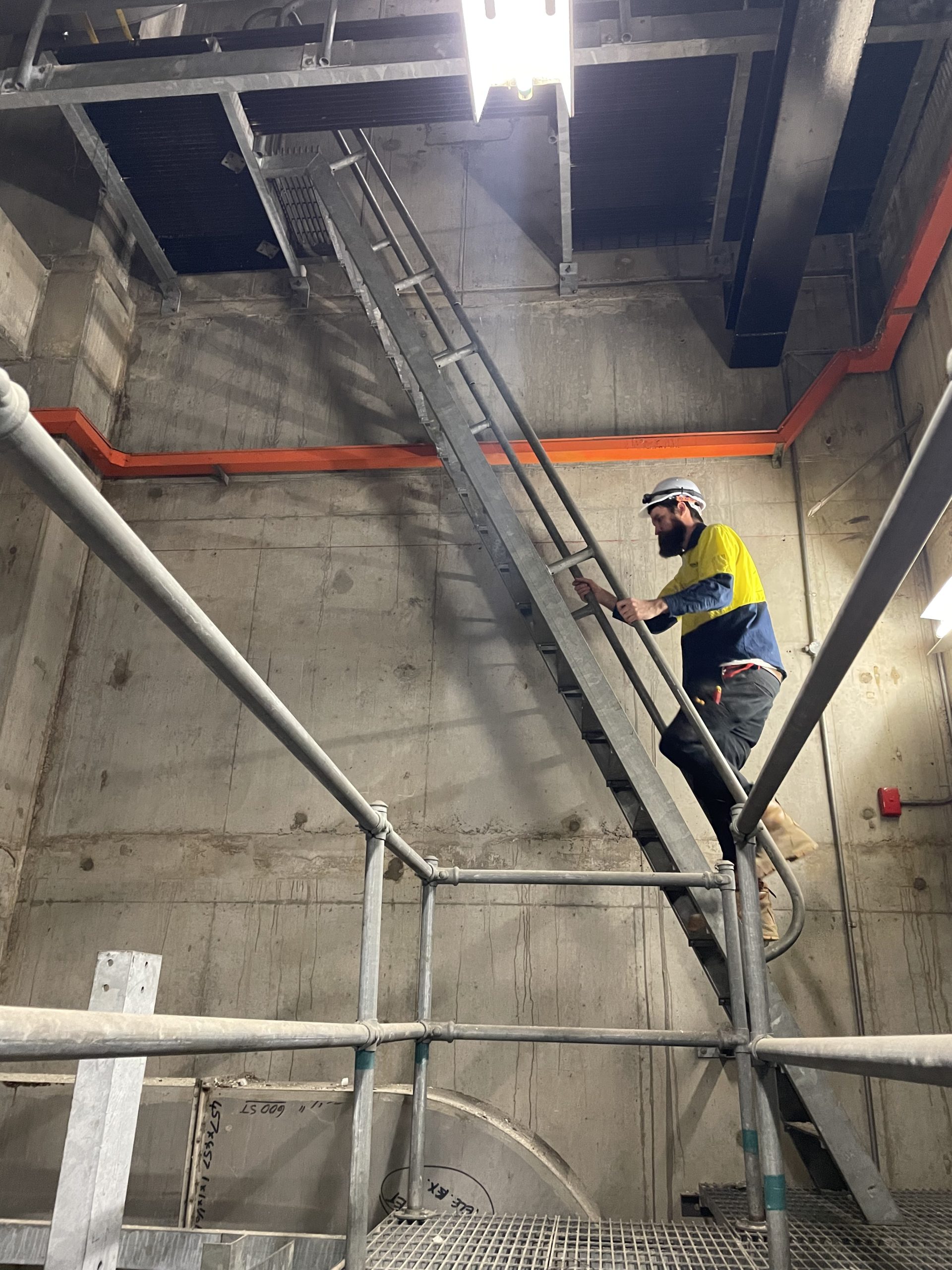Haymarket Telephone Exchange Exit & Emergency Lighting Replacement
Ryan Wilks carried out an electrical project at Haymarket Telephone Exchange which involved a major safety upgrade to the site, the replacement of the exit and emergency lighting throughout the two existing exchange buildings.
The exit and emergency lights play a vital safety role in the event of a power failure or other emergency such as a fire where they illuminate exits (doors ways), identify pathways to these exits and provide emergency spatial lighting so that you can see where you are going. In all 1420 emergency light fittings were replaced, including much of the existing wiring. As you could imagine, part rewiring and replacement of any existing electrical installation is not a simple task, our team worked methodically through both of these fully operational telecommunication buildings which were built many decades ago.
Over the years the state of the existing system had become very run down with many light fittings broken or not working, with uncontrolled modifications to, or failures to the actual wiring. The existing light fittings were also very old and inefficient. Changes in the use of the equipment spaces meant that many of the existing locations of the emergency lighting did provide suitable coverage due to obstructions or relocated doorways and exit paths. All of these issues needed to be addressed.
Exit and Emergency lighting systems are a major component of a building’s safety (compliance) system and as such require annual testing and certification. On simple installations this can be an arduous task to identify each particular type of light fitting (make / model), to confirm the location of each light on drawings and where it’s supplied from, then initiate the 90-minute test and walk and record the function of each light fitting. This functionality test in most instances would be repeated a number of times to capture all the light fittings. Multiply that task on this project by 25 floors across the two building and that becomes a major exercise. With this in mind to make this testing procedure easier, to modernise the site and increase lighting efficiency and to save costs Telstra initiated the installation of a new smart Emergency Lighting testing system.
The system installed is “Clevertronics Zoneworks Hive Dynamic Self-Managed (DSM) Meshing” monitoring system. Whilst the name sounds impressive in reality the system is a wi-fi networking system where one light fitting talks to the next, that talks to the next and so on, forming an invisible wiring link connecting all the lights that then talk back to a central controller (computer) located in the building managers office.
This system provides live real time monitoring of each light fitting. The building manager, with the click of a mouse is able to check the status of any light fitting in the building. Each light fitting is fitted with its own unique QR Code which is then recorded both on a floor plan layout and a master lighting schedule stored in the system. With a click of the mouse, the building manager can also initiate a test of the lighting system which will generate a full report on the lighting system, record a pass / fail report and identify faulty light fittings. The system can be set to automatically test the system at night and have the report ready and available first thing the next morning. The faulty light fittings can then be easily traced by way of the drawings and by confirming actual light fittings by their QR Code stickers.
This new system provides Telstra with the latest state of the art compliant lighting system that provides high efficiency maintenance time and cost savings deleting the need for old fashioned manual light testing.
We thank Telstra and Ventia for the opportunity to work on this major upgrade project, and our next challenge doing a similar upgrade to the Pitt Street Exchange building.

